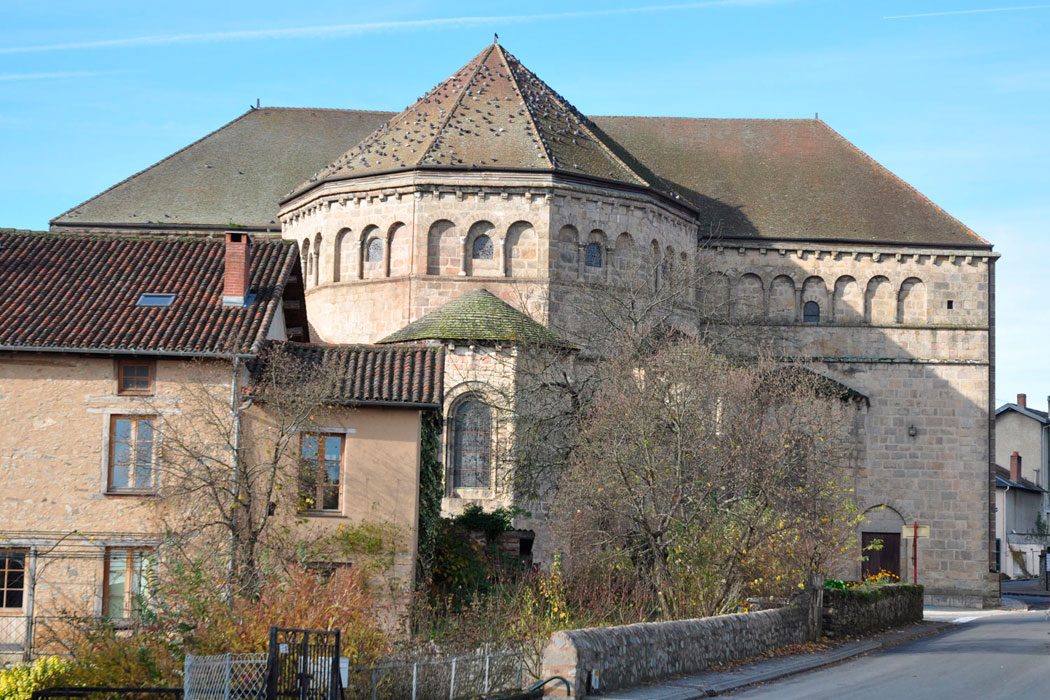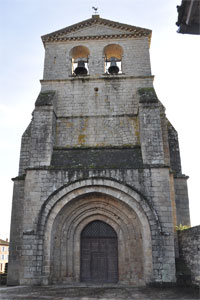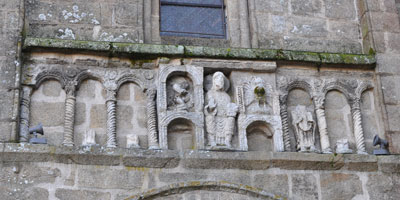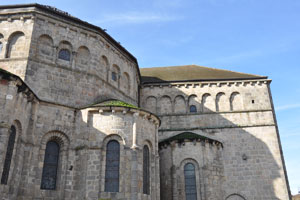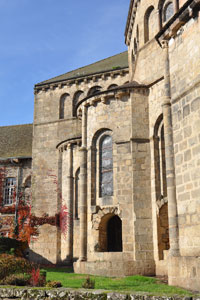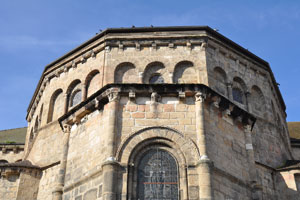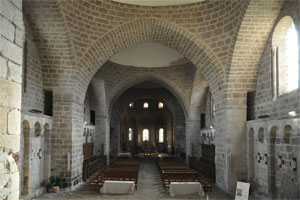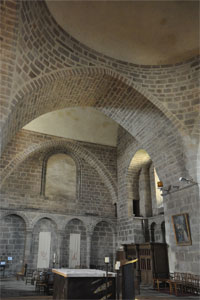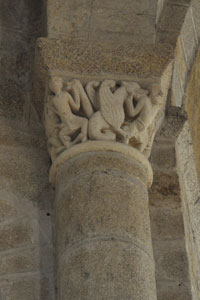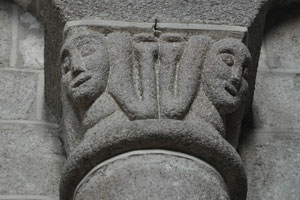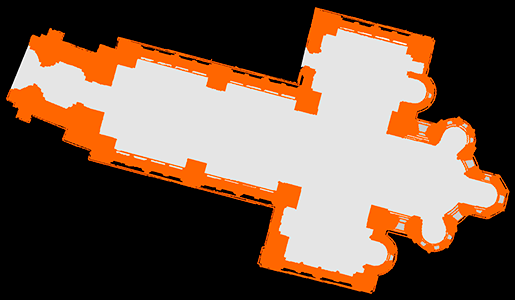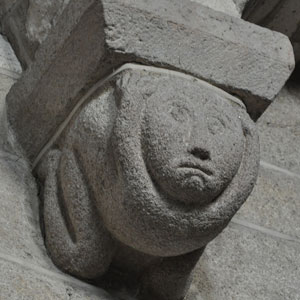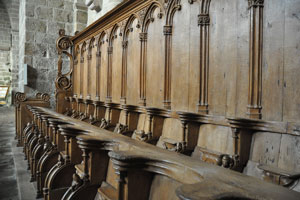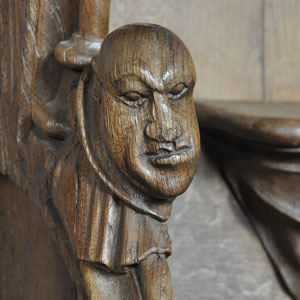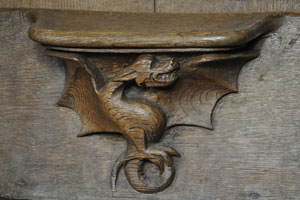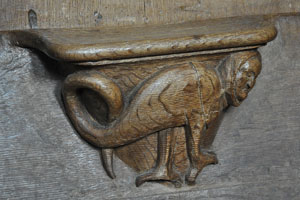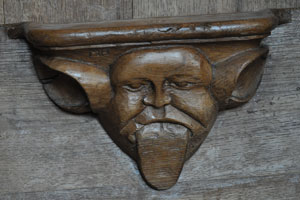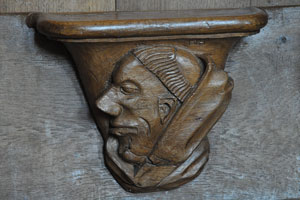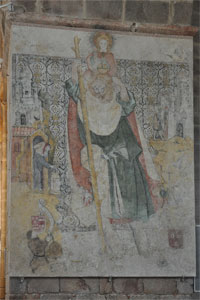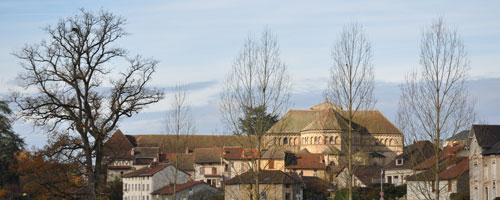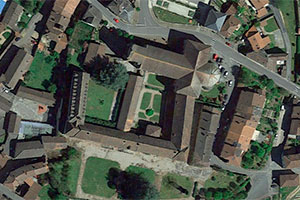Abbey of Saint-Pierre de Solignac
Abbaye de Solignac / Solemniaco / Solemnac
(Solignac, Haute-Vienne)
The monastery of Saint-Pierre de Solignac was founded in 631 by Saint Eligius (c. 590–659), a goldsmith by trade and a native of the area. Eligius became a member of the court of the Merovingian king Chlothar II and later that of his successor Dagobert, who granted him these lands near Limoges to carry out his monastic project.
To populate the new monastery, Eligius brought monks from Luxeuil (Haute-Saône), founded by Saint Columbanus in the second half of the 6th century and following a rule written by the founder himself. Thus, the monastery of Solignac was established, with its first abbot being Saint Remaclus, also from Luxeuil. The monastery soon became a major religious center, training notable figures in the monastic world of the time, such as Saint Eligius himself — later bishop of Tournai and Noyon —, Saint Remaclus — bishop of Maastricht and founder of the monastery of Stavelot (Belgium) —, and also Saints Hadelin and Thillo, the latter a former slave.
Over time, the monastery suffered destructive attacks from Saracens (around 735) and Normans (at the end of that same century). Records exist showing contributions from Carolingian monarchs to finance its reconstruction. Around 820, the community was reformed and adopted the Rule of Saint Benedict, promoted by Benedict of Aniane with the support of Louis the Pious. However, in the mid-9th century, the monastery was once again destroyed by further invasions, forcing the community to disperse. Nevertheless, in the years that followed, Solignac managed to recover and resumed its participation in the religious life of the period.
It maintained ties with major monastic centers such as Saint-Denis (Île-de-France), Saint-Géraud d’Aurillac (Cantal), La Chaise-Dieu (Haute-Loire), Fleury (Loiret), Beaulieu and Saint-Pierre de Vigeois (both in Corrèze), and obtained various titles and privileges. At the same time, the abbey amassed a rich treasure composed of numerous relics and became a stopover for pilgrims. Thanks to this, the monastery church underwent various phases of construction, restoration, and alteration. The current building is largely a work from the 12th century.
The abbey once again suffered significant damage in the second half of the 14th century due to the Hundred Years’ War, and even more so during the Wars of Religion, which led to the monastery’s plundering in 1568. This deepened its decline, a situation that only began to reverse in 1619, when it joined the Congregation of Saint-Maur. The Maurists oversaw both spiritual reform and the rebuilding of the structures. Monastic life came to an end with the French Revolution; since then, the site has had various uses that affected its preservation. The church, now restored, serves as the parish church of Solignac.
The current church building essentially dates from the 12th century. It is known to have been consecrated in 1143, but a later fire required restoration and a new consecration in 1195. Over the centuries, it underwent other destructions and reconstructions. It is a single-nave building with two bays covered by domes and a transept. The central apse, as wide as the nave, contains three radial apses. The transept arms each have two additional small apses. The western façade features an entrance porch and a bell tower, built later and now heavily altered. The surviving monastic buildings date from the reconstruction by the Maurists.

Monasticon Gallicanum
Bibliothèque nationale de France
- AUBERT, R. (1963). Dictionnaire d'histoire et de géographie ecclésiastiques. Vol. 15. París: Letouzey et Ané
- BEAUNIER, Dom (1912). Abbayes et prieurés de l'ancienne France. Vol. 5. Bourges. Abbaye de Ligugé
- DUMAS, Jean-Laurent (1896). Chronique du monastère de Saint-Pierre de Solignac. Limoges: Ducourtieux
- FAGE, René (1923). Solignac. Congrès archéologique de France, LXXXIV session tenue a Limoges. París: Picard
- MAURY, Jean (1960). Limousin roman. La Nuit des temps, 11. Zodiaque
- PEIGNÉ-DELACOURT, Achille (1877). Monasticon Gallicanum. Paris: G. Chamerot
- ROY DE PIERREFITTE, J.-B. L. (1857-63). Études historiques sur les monastères du Limousin & de la Marche, vol. 1. Guêret: Betoulle
- SAINT-MAUR, Congregació de (1720). Gallia Christiana in provincias ecclesiasticas distributa. Vol. 2. París: Typographia Regia
- TEXIER, Abbé (1860). Notice historique et descriptive de l'abbaye de Solignac. París: Didron
- VERNEILH, Félix de (1851). L'architecture byzantine en France. París: Didron
